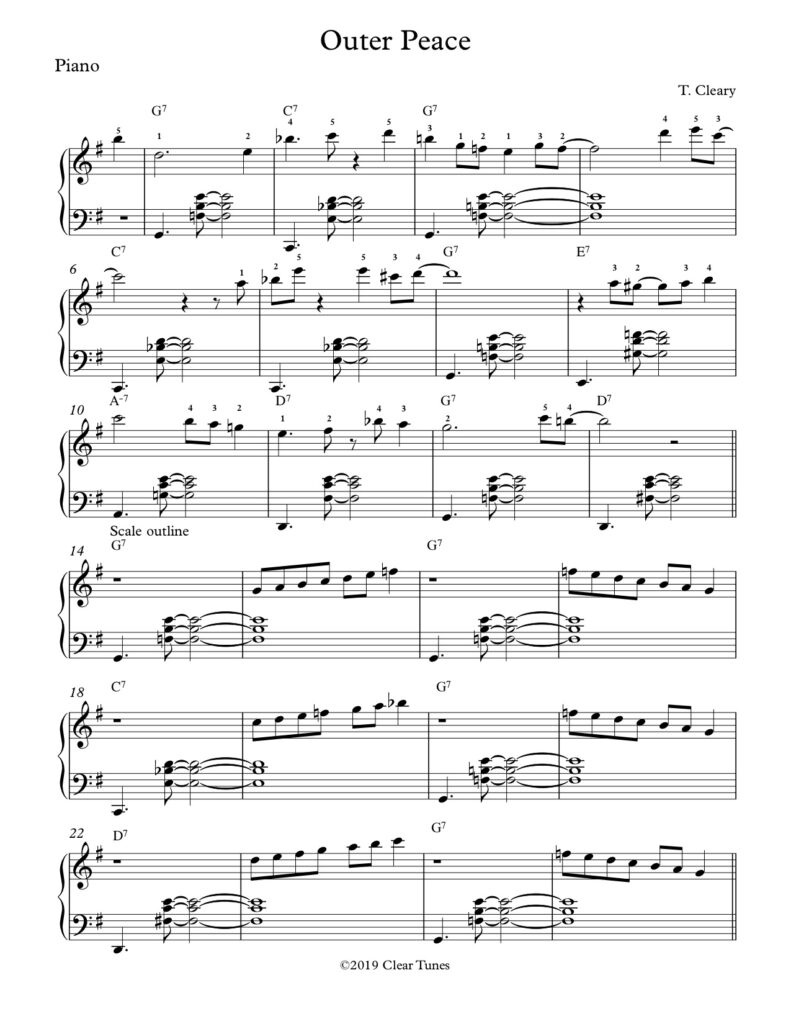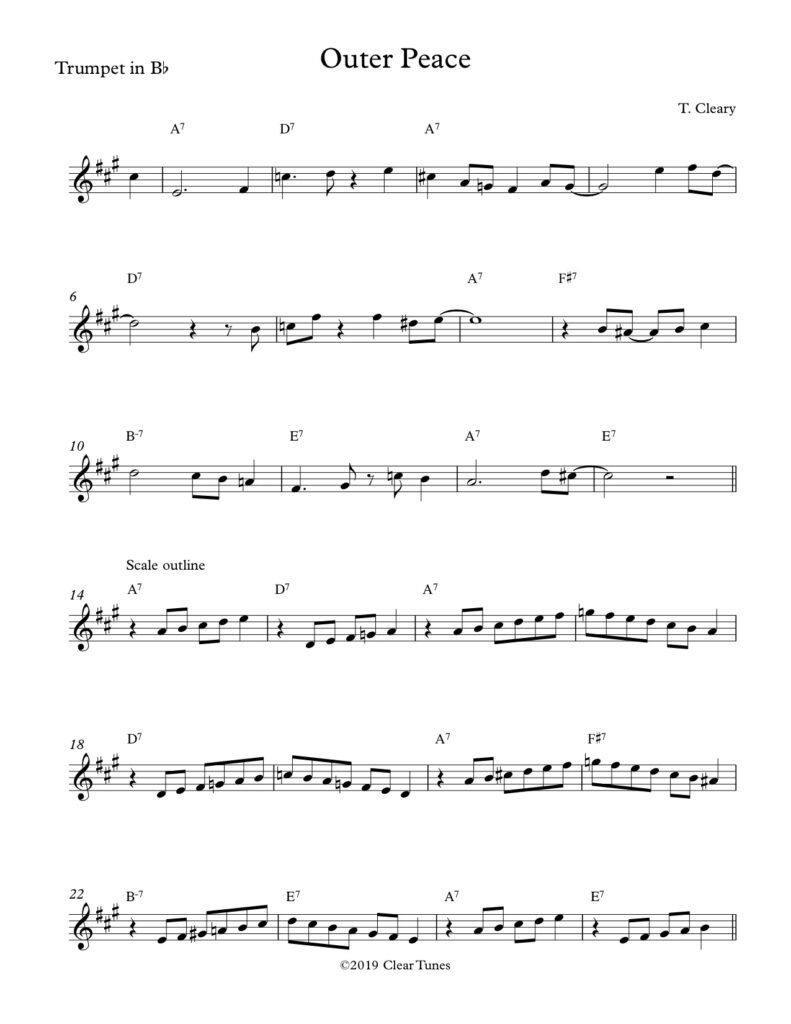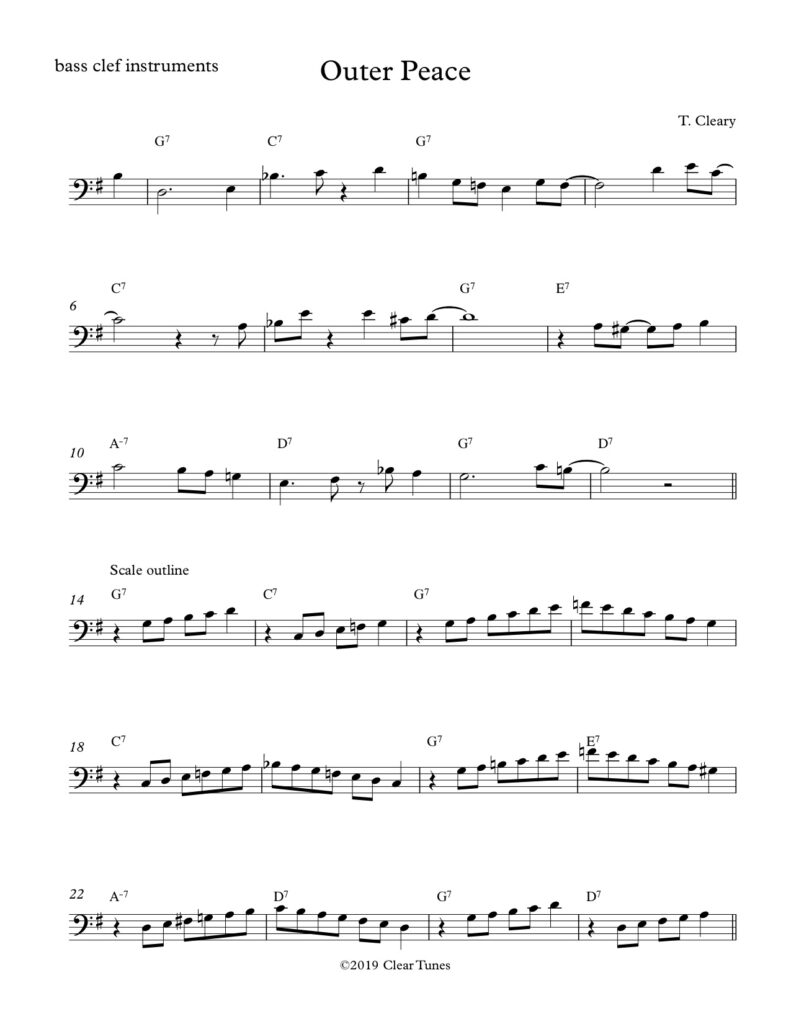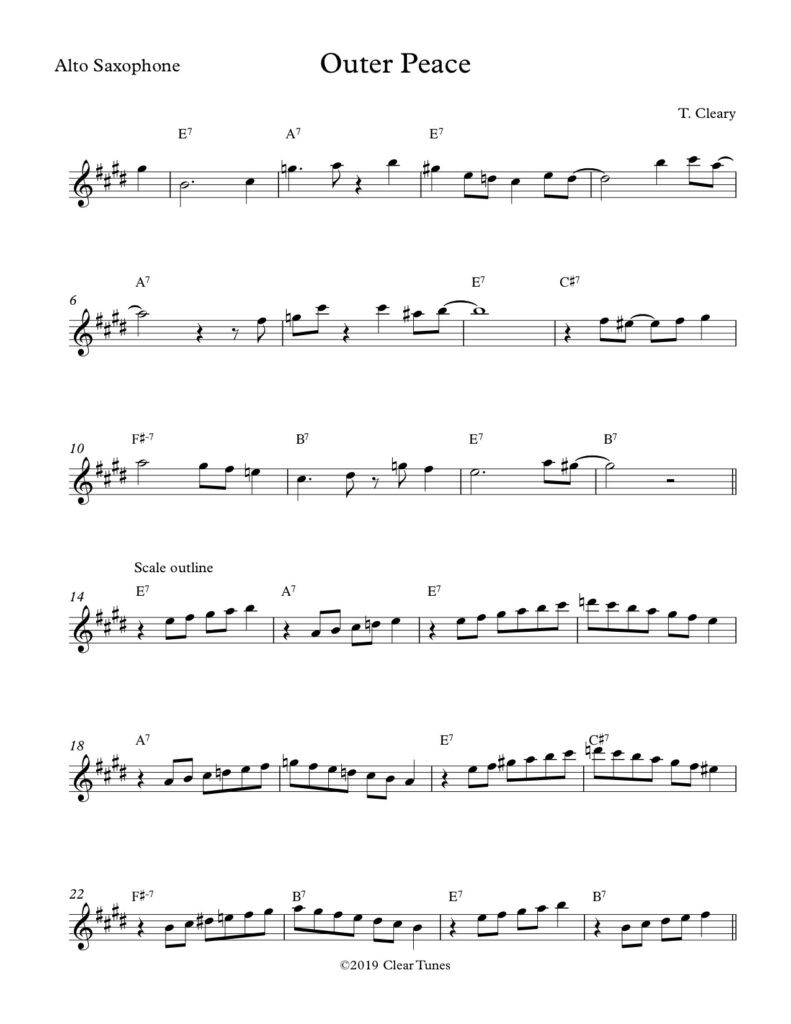‘Outer Peace’ is a melody line on the twelve bar jazz blues progression in G. I wrote it originally as a countermelody in an arrangement of Harry ‘Sweets’ Edison’s blues ‘Centerpiece’. Edison’s original version in A flat major is the slowest version I have heard of the tune. This is a good practice tempo or even goal tempo for ‘Outer Peace’. Edison also plays the tune as a ‘riff blues’ – a four-bar melodic phrase repeated three times over the twelve bar chord progression. A useful tool for practicing the chords to ‘Outer Peace’ is the version of ‘Centerpiece’ in G by saxophonist Scott Hamilton and drummer Jeff Hamilton. It may help to set the YouTube speed control (accessible by clicking on the gear icon at the lower right hand of the YouTube video screen) to .75 or .50. The recording opens with a chorus of piano solo by Tamir Hendelman, which gives you time to get ready to play along with the melody, and Scott Hamilton begins playing the melody on tenor saxophone at :25.
I’d also suggest using this recording to learn the melody of ‘Centerpiece’ by ear, using the way Hamilton plays the second phrase at :32 as a model. Hamilton plays the first note of the melody as a concert D, but to match Edison’s version, change this to an E; he also makes the next to last note of the phrase, on the third beat of the third bar, an F natural; to match Edison’s version, change this note to an E as well. I would play all three phrases of the melody this way, to match the three identical phrases of Edison’s version. Another good model for the tempo of for ‘Outer Peace’ is the Lambert, Hendricks and Ross version of ‘Centerpiece’. Finally, here’s a link to a solo piano version of Outer Peace that I recorded, demonstrating an approach to pedaling and one way of using the scale outline to improvise a solo. I hope you enjoy learning this tune!



